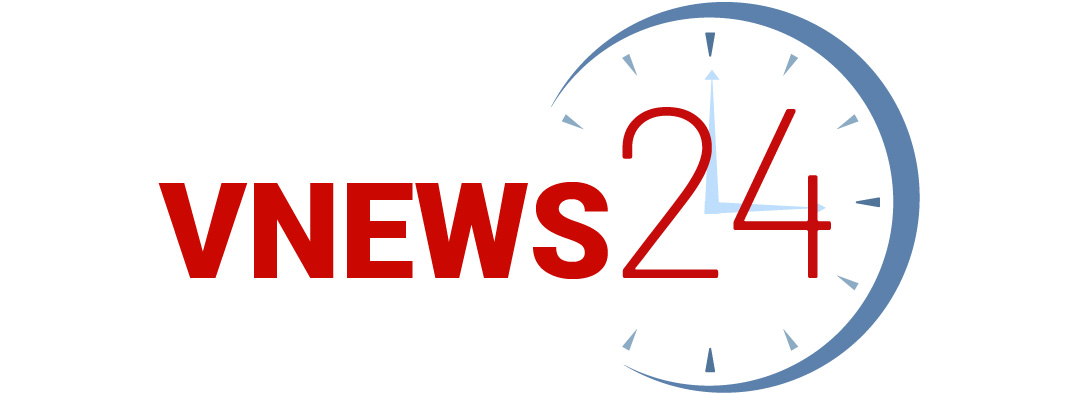 |
| The EU-Vietnam Free Commerce Settlement will see a major rise in international fairness caps within the Vietnamese telecom business, Photograph: Le Toan |
Denis Brunetti, co-chairman of the European Chamber of Commerce in Vietnam (EuroCham), which represents almost 1,000 European companies within the nation, is comfortable that below the EU-Vietnam Free Commerce Settlement (EVFTA), Vietnam will additional open up its telecommunications business to European buyers, permitting them to extend their presence in its telecom market.
“European companies see the changes [in the EVFTA] as a steady and optimistic journey, which can additional contribute to elevated funding potential throughout the telecommunications business,” Brunetti informed VIR.
“Telecommunications is a pivotal business that lays the foundations for socioeconomic growth and inclusive prosperity, and European companies are inspired by the elevated alternatives we’ve to strategically accomplice with the federal government and native companies in a trusted and safe method as we collectively embrace the Fourth Industrial Revolution and its advantages,” he stated.
Opening the market
After seven years of negotiations, Vietnam and the EU are presently finishing the ultimate procedures to signal the EVFTA later this 12 months. The deal is predicted to take impact in 2019.
Notably, as a part of the deal, in telecommunications, Vietnam will supply broad commitments in all subsectors topic to international fairness caps and facilitate joint ventures with EU buyers. Vietnam will enhance the international fairness cap in lots of subsectors of curiosity to the EU, topic to a transition interval of 5 years.
Particularly, Vietnam will increase the international fairness cap in non-facilities-based digital personal community providers from 70 to 75 per cent.
In non-facilities-based value-added providers, the international fairness cap shall be abolished and for the primary time on this sector, EU buyers can purchase as much as 100 per cent possession with out the duty to type a three way partnership.
In facilities-based value-added providers, the present 50-per-cent international fairness cap shall be elevated to 65 per cent. As well as, in non-facilities-based web entry, the international fairness cap shall be elevated from 65 to 75 per cent, and in facilities-based web entry from 50 to 65 per cent.
“Vietnam’s transfer up the worth chain, its embrace of Trade 4.0, and the continuing liberalisation of its telecommunications market will proceed to draw funding from EU telecommunications corporations,” stated Brunetti, who can also be president of Ericsson Vietnam, Myanmar, Cambodia, and Laos.
European telecommunications corporations have been investing in Vietnam for over twenty years. Firms like Ericsson, Siemens, and Alcatel have helped to construct the nation’s telecommunications and cellular networks over the previous 25 years.
For instance, Ericsson has 25 years of expertise co-operating with main Vietnamese telecommunications operators, comparable to MobiFone, Viettel, VNPT Group, and Vietnamobile.
“By opening up its market, Vietnam has been capable of entice not solely international capital, but in addition worldwide technical data and experience. This dedication to additional liberalise its markets over and above World Commerce Group (WTO) phrases by way of the EVFTA will assist Vietnam go additional and entice extra international direct funding sooner or later,” added Brunetti.
“European corporations stay optimistic about investing in Vietnam, as our newest Enterprise Local weather Index reveals. In persevering with to open its doorways to international funding – not least by way of the EVFTA – the Vietnamese authorities is continuous to make the market extra enticing to international telecommunications corporations,” he continued.
Wishing to take a position
Just lately, executives of 20 main Slovakian corporations working in high-tech sectors got here to discover funding and enterprise alternatives in Vietnam. A few of them had been trying to set up enterprise and funding presence within the nation. For instance, MicroStep-MIS needs to work with companions in Vietnam, together with representatives from airports, seaports, hydrometeorological stations, environmental companies, and industrial and concrete growth companies. MicroStep-MIS operates worldwide and is specialised within the growth and manufacturing of monitoring and data methods, the processing of acquired knowledge, in addition to analysis and numerical modelling.
“We see that Vietnam is in vital want of those merchandise, and this is a chance for us to export merchandise to Vietnam. First, we wish to set up a agency community of distributors right here, after which we could take into consideration establishing a three way partnership and even construct a manufacturing facility in Vietnam,” stated mission and system growth supervisor Martin Gazak.
In one other case, Asseco Central Europe, one of many largest software program builders in Central and Japanese Europe, signed a memorandum of understanding with the Hanoi Individuals’s Committee to produce sensible software program units, serving to the town enhance its planning in land, governance, and lighting.
It’s stated that Asseco Central Europe can also be trying to set up a three way partnership with a Vietnamese accomplice.
As well as, Sweden-based Comvik Group has for the third time expressed curiosity in changing into MobiFone’s strategic accomplice, because the Vietnamese telecom firm is within the means of equitisation.
In Might 2018, throughout his assembly with Deputy Prime Minister Vuong Dinh Hue, chairman of Comvik Worldwide Vietnam AB M. A. Zaman stated that with its sturdy technological foundations, facilitating 90 per cent of Sweden’s non-cash transactions and presently researching a 6G community programme and non-cash transaction functions, Comvik believes they may efficiently help the Vietnamese authorities in equitising MobiFone.
Other than Comvik, Norway-based Telenor Group has additionally expressed curiosity in buying MobiFone’s stakes.
Nice potential
At current, the Vietnamese telecom business is growing from energy to energy. Cellular protection within the nation has now reached 99 per cent of the inhabitants, with 3G and 4G protection not far behind. Based on the Ministry of Info and Communications, as of late June 2018, Vietnam had about 136 million cell phone subscriptions – together with 2G, 3G, and 4G providers. Some 54.2 per cent of the nation’s inhabitants use the web.
Moreover, there’s a excessive charge of fibre-optic cable protection throughout the size and breadth of the nation.
At this time, Vietnam ranks among the many 17 international locations with the very best variety of web customers. The federal government goals to raise Vietnam into the highest 10 by way of software program and digital content material outsourcing providers, enabled by a thriving telecommunications business.
“Certainly, the federal government’s imaginative and prescient and strategic deal with the Fourth Industrial Revolution, sensible cities, startups, and the Nationwide Innovation Community Programme, enabled by state-of-the-art 4G and next-generation 5G Web of Issues cellular telecommunications networks, is clearly serving to the ICT sector proceed to report sturdy income development,” stated Brunetti from EuroCham.
Based on the US Industrial Service in Hanoi and Ho Chi Minh Metropolis, Vietnam’s whole telecom service income in 2017 was estimated to succeed in $6.9 billion. Cellular knowledge providers make up the biggest share (36.8 per cent) of the sector. State-owned enterprises like Viettel, Mobifone, and VNPT-Vinaphone proceed to dominate the Vietnamese telecom market, with over 90 per cent of the market share. Viettel is the biggest participant and is forecast to be the market chief by way of 2020.
A current Economist Intelligence Unit (EIU) report additionally reveals that spending on IT was estimated at $6.4 billion in 2017 and forecasted to develop to $6.5 billion in 2018, a rise of two.5 per cent, a decrease charge than the 8.1-per-cent development in 2017 and 2016.
EIU additionally reported that final 12 months, spending on IT {hardware} continued to signify the biggest share (88.8 per cent) of whole spending, with software program and providers taking on 4.6 and 6.6 per cent, respectively. Key gamers within the {hardware} market embrace suppliers from Taiwan, China, the US, and Japan. Main gamers within the software program market embrace suppliers from the US, Germany, China, Russia, and Vietnam.


